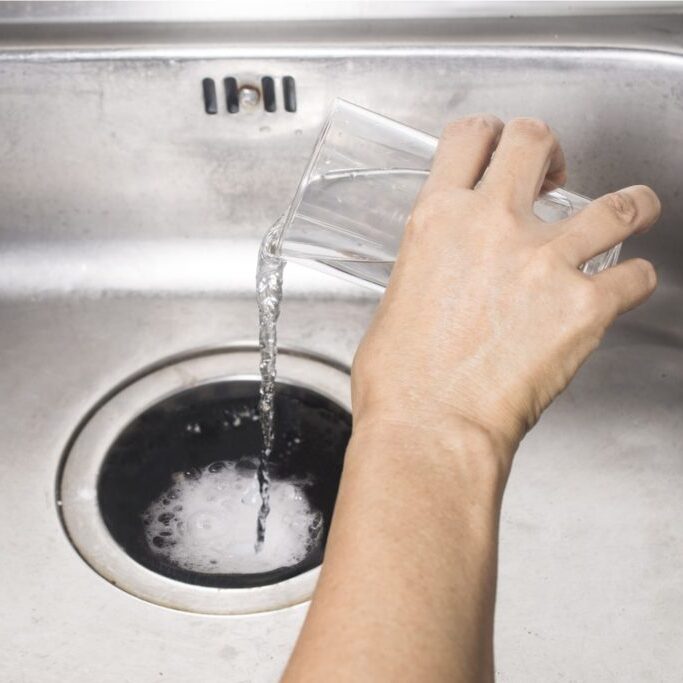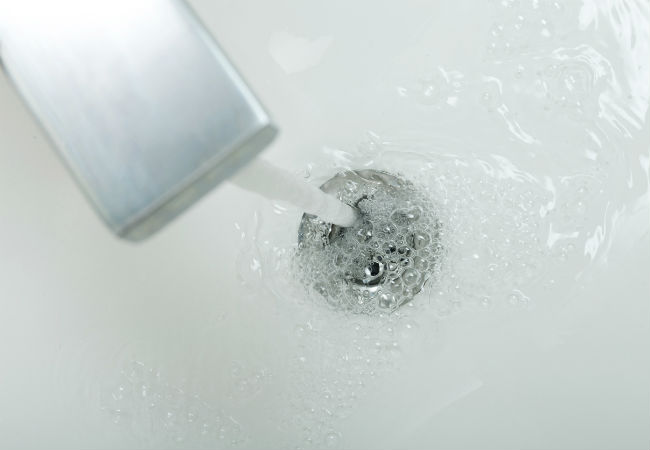Presented here in the next paragraphs you can discover additional awesome insights in regards to Solved! How to Fix a Slow Sink Drain.

Intro
We have actually all existed: You're brushing your teeth or cleaning your hands, and you discover the water pooling in the sink. As opposed to promptly swirling down the drain, it sticks around, transforming your once-refreshing morning regimen into a miniature swamp scene. A slow-draining sink isn't simply bothersome; it's frequently a sign of larger pipes problems lurking below the surface. The good news is that most slow-draining sinks can be repaired with a little knowledge, a couple of basic tools, and some persistence. Prepared to tackle this task head-on? Allow's roll up our sleeves and dive right in.
Recognizing the Reasons For a Slow-Draining Sink
Before you start poking around in your pipelines, it helps to understand what might be triggering the downturn. Recognizing the root cause makes it simpler to pick the ideal fix.
Typical Offenders Behind Slow Water Drainage
So, what's obstructing things up? Typically, it's a blend of daily particles-- assume hair, soap residue, toothpaste residue, and leftover food particles. In time, these little bits gather and cling to the pipeline wall surfaces, gradually narrowing the passage and making it harder for water to go through. Sometimes, mineral deposits from difficult water can additionally add to the crud, producing the ideal storm for persistent obstructions.
When is it Time to Act?
If you observe the water draining slower than common, it's an excellent concept to interfere sooner rather than later. Waiting also long might bring about complete obstructions, undesirable odors, and even pipe damages. If the water takes more than a few secs to clear out after shutting off the faucet, consider it a warning and prepare yourself to put on your do it yourself hat.
Devices and Products You'll Need
The right tools make all the difference. The good news is, you won't require a totally equipped plumbing technician's van to finish the job.
Necessary Tools for Do It Yourself Fixes
A bettor is your go-to beginning factor. A little, sink-sized bettor develops suction that can displace minor clogs. For more persistent obstructions, a drain snake (often called a plumbing's auger) works marvels. A pair of handwear covers, a flashlight, and maybe a set of protective goggles are additionally convenient.
Suggested Cleaning Solutions
Mild recipe soap and warm water can help break down greasy build-up. A mix of baking soda and vinegar is a time-tested natural home remedy, and chemical cleaners provide a more environmentally friendly strategy. Keep chemical drainpipe cleansers as a last hope, as they can be severe on your pipes.
Safety And Security First: Safety Measures and Prep work
Prior to you launch into unclogging mode, think of safety. You're managing possibly dirty water and particles, so slip on a set of handwear covers. If you're making use of chemical cleaners, guarantee the space is well-ventilated and follow the directions on the label.
Safety Equipment and Office Setup
Set some old towels or dustcloths around the sink area to capture splashes. Eliminate any type of things that may enter your means, like soap dispensers or toothbrush owners. Make sure you have good lights-- grab a flashlight if needed.
Step-by-Step Overview to Fixing a Slow-Draining Sink
Currently, allow's get into the nitty-gritty. This step-by-step procedure will lead you with straightforward techniques to restore your sink's water drainage.
Action 1: Remove and Tidy the Stopper
Often, the stopper (that small plug you push down to obstruct water) is the very first wrongdoer. Remove it meticulously and clean off any type of hair or substance caught around its base. Wash it thoroughly prior to putting it back in position.
Step 2: Make Use Of a Plunger to Remove Particles
Got that bettor ready? Setting it over the drain and give it a couple of firm pumps. The idea is to create suction that can loosen any obstruction. If you see littles particles floating up, you get on the appropriate track.
Action 3: Attempt a Drain Serpent or Cord Wall Mount
If the bettor doesn't do the trick, it's time to draw out the drain snake. Carefully feed it into the drainpipe and spin as you go. You might feel some resistance-- that's likely the clog. Keep twisting and drawing up until you eliminate the blockage. If you do not have a drain serpent, a corrected the alignment of wire wall mount can operate in a pinch.
Step 4: Use a DIY Drainpipe Cleanser
An all-natural cleaner made from baking soda and vinegar can break down residual crud. Put half a mug of baking soft drink right into the drainpipe, adhered to by half a mug of vinegar. Allow it fizz for around 15 minutes, then flush with hot water. This chain reaction usually does marvels for small clogs.
Tip 5: Rebuild and Examine the Sink
Placed every little thing back with each other and run the faucet. Does the water now swirl down the drain at a respectable rate? If yes, give on your own a pat on the back. Otherwise, don't misery-- there are still a few even more dress up your sleeve.
Different Techniques for Stubborn Clogs
Not all clogs are produced equivalent. If your sink still declines to coordinate, think about these alternative options.
Baking Soda and Vinegar Method
We currently touched on this, yet it's worth keeping in mind again. This gentle, environmentally friendly approach is more secure than chemical cleaners and usually fairly effective.
Enzymatic Drain Cleaners
Enzyme-based cleaners utilize all-natural microorganisms to absorb organic matter. They're an outstanding option if you're looking to avoid harsh chemicals. Just remember, they might take a bit longer to function their magic.
Chemical Drainpipe Cleansers: Advantages And Disadvantages
Chemical cleaners can blast through difficult clogs quickly, but they're not without drawbacks. They can create warmth and fumes, damage pipes if used excessively, and posture environmental risks. Utilize them moderately, and constantly adhere to the directions thoroughly.
Preventive Measures to Maintain Your Sink Flowing
Prevention is the best treatment. By embracing a few straightforward routines, you can maintain your sink from reducing in the first place.
Regular Cleansing Practices
Clean down the sink basin and component location on a regular basis. Eliminate hair or food bits prior to they have an opportunity to wash down the drain.
Staying Clear Of Damaging Substances Down the Drain
Hesitate before dumping coffee premises, oil, or coarse veggie scraps down the sink. These perpetrators hold on to pipeline wall surfaces, producing blockages gradually.
Regular Upkeep Checks
Arrange a quick regular monthly assessment. Run hot water with the sink for a few mins, focusing on the circulation. If it seems slow-moving, act quickly before it becomes a full-on clog.
When to Call a Specialist Plumbing Technician
Often, no matter just how tough you try, that block simply won't move. That's when it's time to bring in the pros.
Indications That Show a Much More Significant Problem
If your sink drains pipes slowly regardless of multiple attempts, or if you notice water backing up in other components (like your shower or bathroom), you might have an extra serious pipes concern lurking deeper in the system.
Balancing DIY Efforts with Professional Assistance
While do it yourself can conserve you cash and use a sense of success, there's no pity in calling an expert. An expert plumbing professional can assess your entire plumbing arrangement, ensuring there's no underlying damage or lasting problem that might cost you extra down the road.
Contrasting Prices and Long-Term Solutions
Before making a decision, consider the big picture. An economical, quick fix could address the problem temporarily, but buying a much more irreversible remedy could save you cash and stress in the long run.
Evaluating the Expenditures of DIY vs. Expert Repairs
Do it yourself fixes usually cost little bit greater than the price of a bettor or a container of cooking soda. Expert solutions, on the other hand, included a price yet may prevent repetitive problems and costly fixings later on.
Purchasing High Quality Fixtures and Upgrades
If your sink's design contributes to frequent clogs, it may be worth updating to higher-quality components or changing the plumbing layout. Consider this a financial investment in your home's capability and comfort.
Verdict
A slow-draining sink can seem like a minor irritation, yet it's usually an indication that your pipes requires a little TLC. By comprehending the root causes, utilizing the right devices and methods, and committing to basic safety nets, you can keep your sink flowing easily. And when all else fails, never wait to call a professional-- your home's plumbing is worth the investment in care and maintenance.
Three Common Ways to Fix a Slow Drain
Baking Soda Method
Boil a full pot of water. Measure out cup of baking soda and pour it down the drain. Then take cup of the magical cleansing substance known as white vinegar and drop that down there too. Allow the mixture to fizz in the drain for five minutes as the vinegar and baking soda combine. Now dump in that whole pot of boiling water. This combination of cleaning substances should clear out anything that is causing your sink to drain slowly. If it doesn t...
Zip-It
If the baking soda method doesn t clear out your drain, it may be because a significant amount of hair and/or other debris has collected there and you need to remove it. Purchase a Zip-It tool at any home improvement or hardware store and insert it into your drain. It will catch any collected hair or debris that s blocking the flow of water. Pull it out. If it s got a big clump of hair, etc. on the end, you ve probably got your culprit.
Drain Cleaner
If these methods don t work, there is the standard drain cleaner that you can also buy in a hardware store or even your local grocery store. It s better if you can use a household solution, but these drain cleaners often work in a pinch. They re very simple to use. You generally just dump them in your drain and wait. If even this method is not effective, it may be time to call the plumber.
https://www.mrrooter.com/oneida/about-us/blog/2017/july/three-common-ways-to-fix-a-slow-drain/

I hope you enjoyed reading our topic about Solved! How to Fix a Slow Sink Drain. Many thanks for taking the time to read our short article. Sharing is nice. You never know, you will be helping someone out. Thank you for your time invested reading it.
Click Here